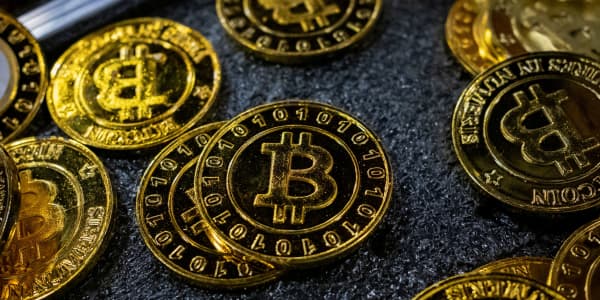Money is great to gain power and influence, and sometimes, to influence fights over even bigger piles of money. Take the resurgence of activist investors. They used to be called corporate raiders in the 1980s and are now back and, arguably, "better" than ever.
On Friday, activist investor Dan Loeb of hedge fund Third Point announced a major stake in Yum Brands, as did activist hedge fund Corvex Management (founded by a Carl Icahn disciple), dual activist action which caused the fast food stock to catch fire.
But if you don't have the millions to get into their hedge funds and can't stomach the typical hedge fund management fee structure of 2 percent—plus 20 percent of any profits—you're not likely to be sending Loeb, Bill Ackman or Starboard Value a thank-you for your annual statement gain. Most top hedge funds are closed to new investors. ...
At least, until now they have been ...
Among the latest novelties in the ETF market is a fund that tracks the stock battles of activist investors at a fee much lower than their hedge funds.
You can be a Carl Icahn, too!
Global X Funds has found success with its Guru ETF (GURU), raking in $360 million in assets by tapping into the stock picks of investing icons. It tried last year to extend the franchise with the launch of international and small-cap Guru ETFs, to very limited marketing success—less than $5 million in assets combined.
So of course the ETF company is at it again, launching the Global X Guru Activist Index ETF (ACTX) this week.
The ETF includes 50 of the top equity holdings that are targets of major activist investors, which it finds by using the publicly available information contained in 13F and 13D filings, the same technique behind the original Guru ETF. (For the record, it could also just watch the activists yelling and screaming about cozy C-suites on CNBC and probably get the same portfolio cobbled together.)
Anyway, now you can hitch your stock-market wagon to high-level activist campaigns led by hedge fund managers and other pesky institutional investors. But should you? The expense ratio of 75 basis points is certainly less than a "2 and 20" hedge fund, but the jury is out on whether it's going to outperform the index.
FactSet's ETF analyst Paul Britt said the Guru Activist Index ETF gets credit for being the first pure-play focus on activism in the ETF market. Some ETFs and some mutual funds have screens for good governance and healthy board representation but don't clearly go after the boards that activists see as ripe for ripping apart. The original Guru fund has been a winner, but with a key caveat. Its performance edge shows recent signs of weakening. In the past year, GURU has trailed the S&P 500, though since inception in 2012, Guru has beaten the index by a healthy margin.
"The concept is interesting," said Zacks Investment Director of ETF Research Neena Mishra. But she has a few reservations. For one, investors should wait to see if the ETF is able to gather at least $50 million in assets before considering it; otherwise, its trading costs will eat into returns. It might be cheap compared to hedge funds, but expensive for an ETF, and not only due to trading costs.
Mishra said that while some studies showing activist strategies do produce short-term outperformance, she's not so sure they can be profitable in the long run. So the onus would be on the ETF, and its investors, to identify the short-term pop perfectly. If that strategy doesn't work, it could make the new ETF, like the original Guru has been lately, an expensive index fund.
"I'm not too excited about it now," Mishra said. "We'll see if it can gather assets."
- Assets: $1.5 million
- Year-to-date performance: N/A
Designer genes
Maybe it's the risk-taking gene in the activist investor that's responsible for their success, and if so, maybe ARK Investment Management's actively managed Genomic Revolution Multi-Sector (ARKG) ETF, which launched last fall and invests in companies involved in genomics, is the way to go. The fee, again, is an issue for the ETF analysts, at 95 basis points.
"Ninety-five basis points is high for an ETF. It's about what you'd get with a mutual fund, but it's not surprising, since it's a niche product and actively managed," said S&P Capital IQ director of ETF and mutual fund research Todd Rosenbluth. He noted that other ETFs that invest in the space are much broader in targeting biotech but that ARKG could appeal to those wanting a pure genomics play. The other analysts said the best thing about the ETF is the narrowness of its approach, a style for which ARK has become known.
Timing may be an issue right now. Biotech took it on the chin in April—no surprise, since it has been the market's knockout performer recently, but given the recent volatility in the health sciences stock sector, investors may be wise to wait before rushing into ARKG or any of the funds in the biotech sphere.
- Assets: $8 million
- Year-to-date performance: 5.6 percent
A portfolio for the Koch Brothers
If you prefer looking to technology of the past rather than the future, the GreenHaven Coal Fund (with the apt ticker of TONS) holds futures contracts on coal. It launched in February and has amassed $5.8 million in its first two months. TONS is the only coal futures exchange-traded portfolio (there are fund options to invest in the embattled publicly traded coal companies), so it's got that going for it, if you just have to have your coal exposure. But for your antiglobal-warming investment stance, you will incur a fee of 1.23 percent.
Speaking of the environment. ... With rising awareness about the environmental impact of coal and declining prices of the alternative fuels, Mishra expects difficult times for the global coal industry in the years to come.
She said, "In general, I'm not a fan of futures-based commodity ETFs, due to possible contango issues, though this ETF does try to limit the impact of contango by using three monthly contracts of the next calendar quarter. The expense ratio is very high, and volumes are very thin, leading to high trading costs. It is thus no surprise that the fund has managed to gather less than $6 million in assets so far."
According to ETF.com, TONS holds futures contracts on Rotterdam coal, specifically—Rotterdam is the largest coal terminal in Europe, and the cost of coal transport can lead to price disparities between terminals. The three-month contract approach limits impact of contango, but it also limits ability to act on spot price changes.
Morningstar fund analyst Robert Goldsborough said TONS fee seems high but investors are avoiding it because of its extreme focus. "This is a narrow product, and investors have other options for coal, such as KOL (the Market Vectors Coal ETF), though they aren't futures-based."
Is coal a value investor's ultimate bet? The case has been made, but most recently because the sector has done so poorly. KOL is down 7 percent year-to-date, 28 percent in the past year and 63 percent in the past five years. Whether that's acyclical or secular, decline remains to be seen.
- Assets: $5.8 million
- Year-to-date performance: -3 percent
Channeling your inner Mongolia
When it comes to mineral riches, an older option from the ETF market is worth considering among the more narrow options that exist: the Global X's Central Asia & Mongolia Index (AZIA) ETF, launched in 2013. It tracks companies that do business in Mongolia, Kazakhstan, Kyrgyzstan, Tajikistan, Turkmenistan and Uzbekistan. Most of the companies it trades are listed in London or Toronto, and its fee is 69 basis points.
"These are mineral-rich countries," said Goldsborough, adding that AZIA is a convenient way for a U.S. investor to tap economies that are not easily accessible otherwise.
On the plus side right now, investors seem to be wary of adding too much to U.S. equities exposure, while Europe remains a mess and China slowing—so dabbling in frontier markets like these with a sliver of your portfolio could be worth an argument.
On the other hand, countries aligned with Russia have geopolitical risks, Rosenbluth said, adding that AZIA carries additional challenges being heavily concentrated in energy and in unproven markets. "There's greater risk in untapped markets," he said. "They may never be tapped."
Mishra is not a fan. "While in general, I favor a small allocation to frontier markets due to their high growth potential, cheaper valuations and low correlations with developed markets, I am not very positive on this fund in particular as of now," she said. "Central Asia is a resource-rich region; weak commodity prices and a slowdown in China have thus been weighing on region's growth and the trend is likely to continue this year. Economic and political troubles in Russia have made matters worse for these countries. The ETF has almost 75 percent of its asset base invested in materials and energy industries, which doesn't bode well in the current environment."
While the fund is not well-diversified, Rosenbluth noted that AZIA might make sense complimenting a larger emerging markets investment.
- Assets: $2.7 million
- Year-to-date performance: 3 percent (up 15 percent in past three months)
- One-year performance: -15 percent
—By Joe D'Allegro, special to CNBC.com




